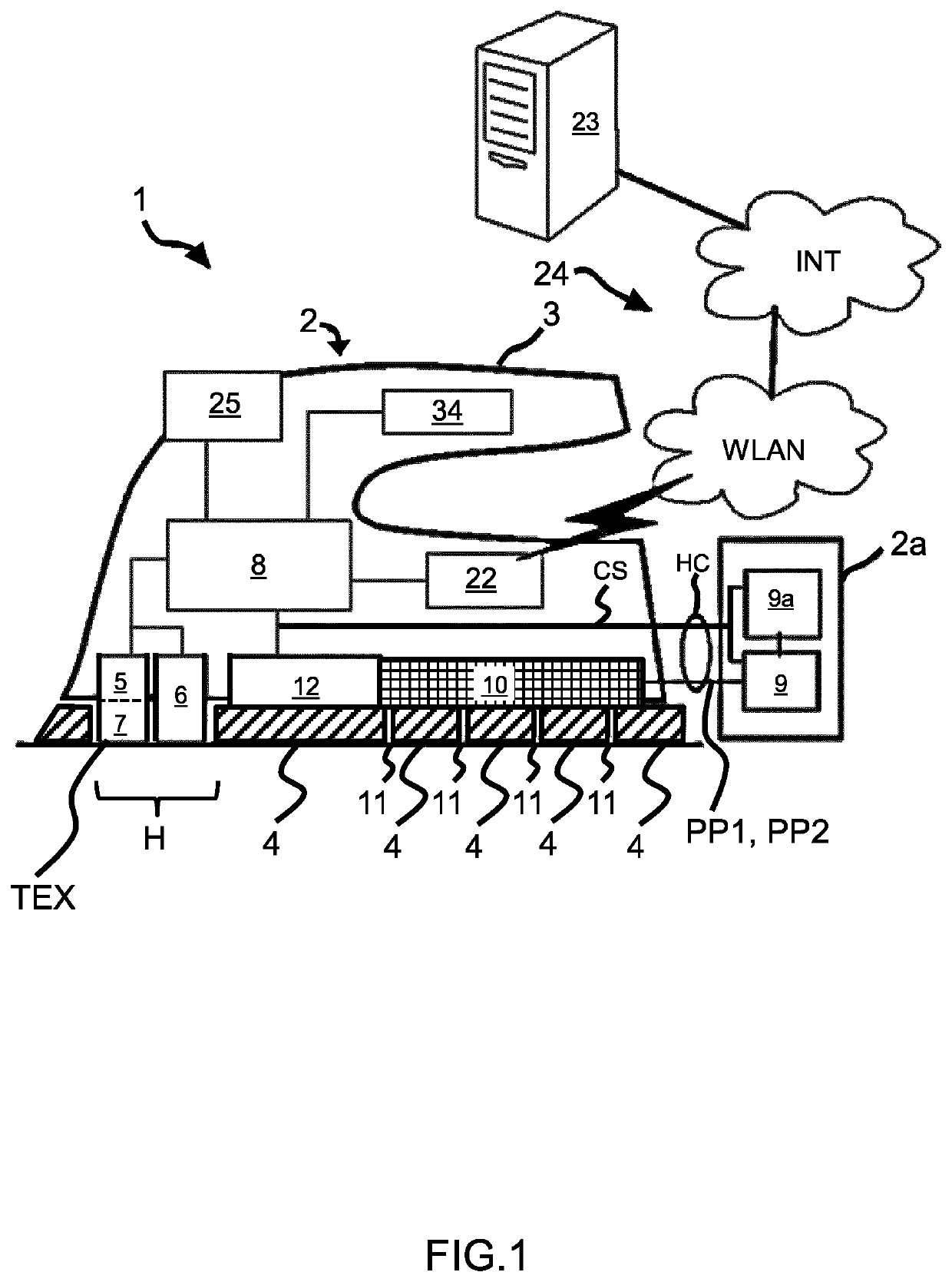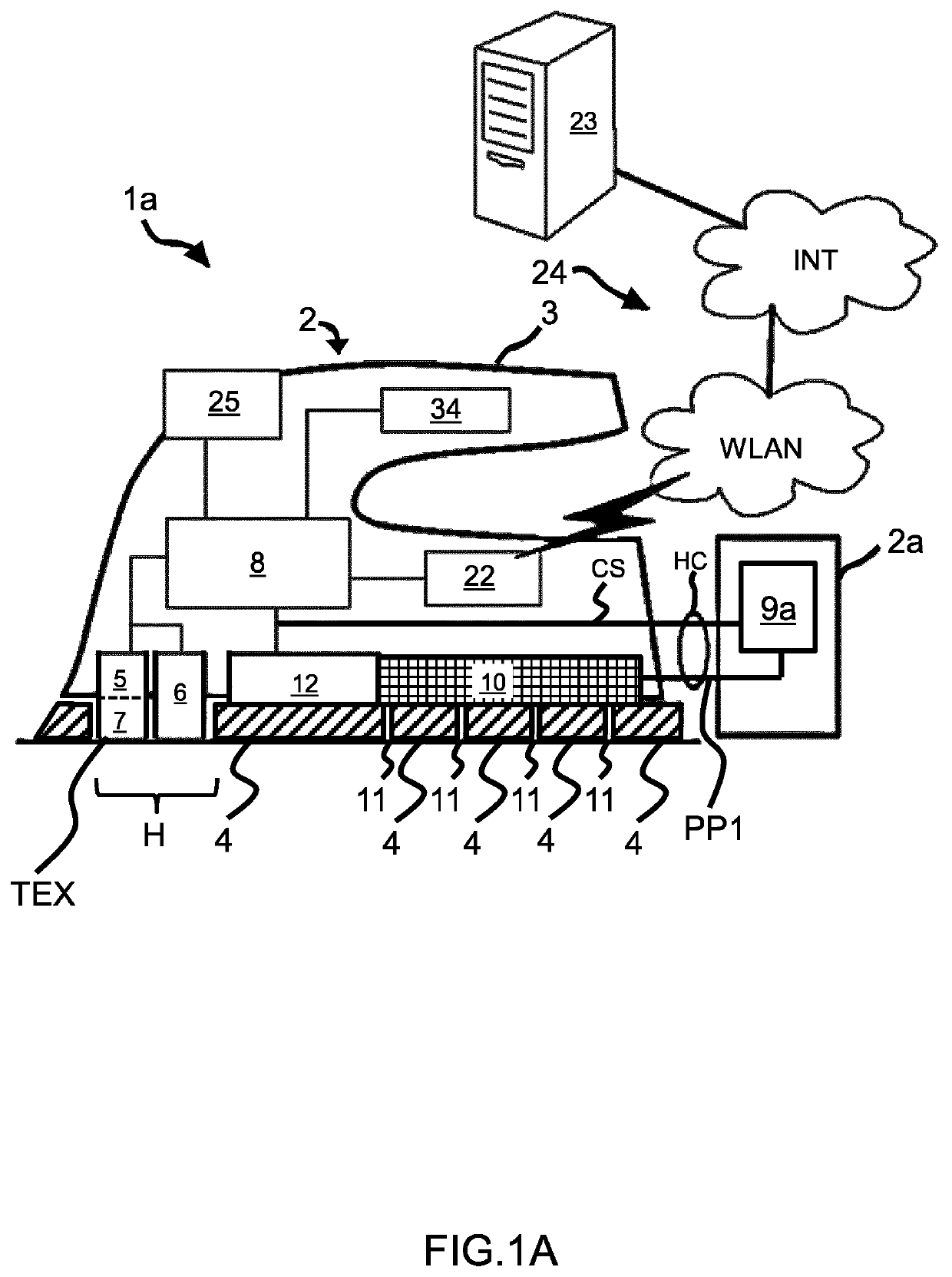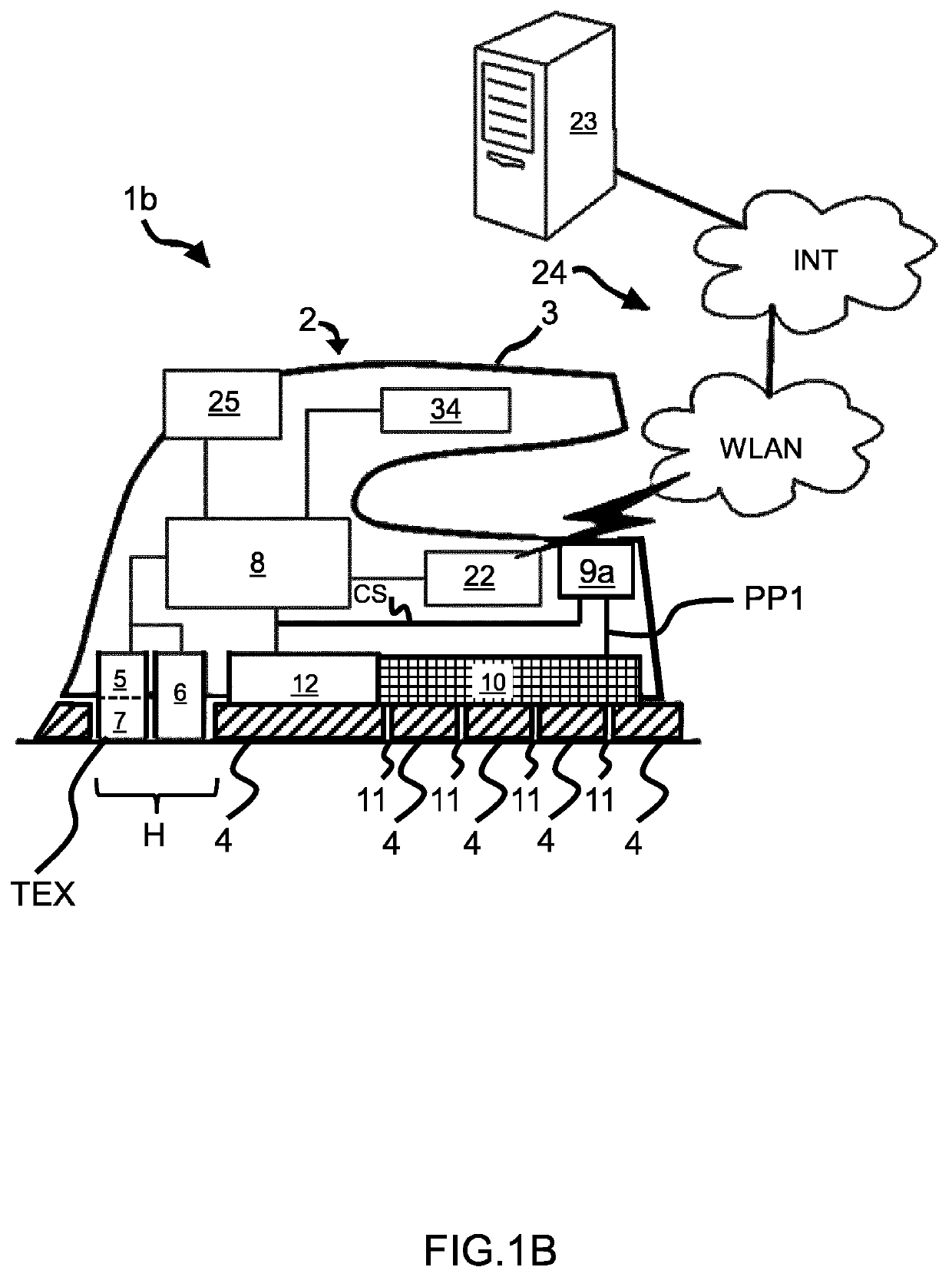Method for actively decreasing the temperature of a heatable soleplate in a textile treatment device
a technology of textile treatment device and temperature reduction, which is applied in the field of garment care, can solve problems such as textiles (of garments) getting damaged
- Summary
- Abstract
- Description
- Claims
- Application Information
AI Technical Summary
Benefits of technology
Problems solved by technology
Method used
Image
Examples
first embodiment
[0109]this invention is as shown in FIG. 9A where two electro-valves V1 and V2 are connected in series along the first pipe PP1.
[0110]The valve V1 in this embodiment is a standard electro-valve with one open (ON) and one closed (OFF) position. The open / close states of the valves V1 and V2 are controlled by control signal CS from the control unit 8.
[0111]The valve V2 in this embodiment is a customized electro-valve which does not have a real closed position. For valve V2, it has a large diameter (for example 4 mm) when being in open (ON) position, and a small diameter orifice (for example 2 mm) when being in closed (OFF) position.
[0112]The valve V1 controls steam on / off (release steam / not release steam), while valve V2 controls high (when ON) steam rate and low steam rate when OFF.
[0113]The different combinations and the resultant steam rates at the exit of the first pipe PP1 are listed in the below table 1:
[0114]
TABLE 1V1 State(Controls release of steam)On (Open)Off (Close)V2 StateO...
second embodiment
[0117]this invention is as shown in FIG. 9B, where two electro-valves (V1 and V2) are connected in parallel. Valves V1 and V2 in this embodiment can have the same orifice diameter or different orifice diameters depending on the requirements of the application.
[0118]Different steam rates at the exit of the first pipe PP1 can be obtained using a combination of E-valve states. This is shown in the below table 2:
[0119]
TABLE 2V1 State(Small - 2 mm orifice)On (Open)Off (Close)V2 StateOn (Open)High SteamMedium Steam(Large - 3 mmOff (Close)Low SteamNo Steamorifice)
[0120]The third embodiment of this invention is as shown in FIG. 9C. In this embodiment, valves V1 and V2 are the same as V1 and V2 in second embodiment except that they are built into a single housing SH1 as one component. The high steam rate and low steam rate are delivered in the same manner as in the second embodiment.
third embodiment
[0121]this invention reduces the amount of external tube connections, reducing the size of the E-valve configuration required to deliver this function.
[0122]Another benefit of the third embodiment is the reduction in condensation of steam to water in the E-valve configuration during the start of ironing or if the steam function has not been triggered for an extended period of time, thus reducing carryover water, which can result in a so-called “spitting” problem at the steam vents 11 of the heatable soleplate 4. This is due to the reduction of the overall thermal mass of the E-valve configuration.
[0123]The fourth embodiment of this invention is as shown in FIG. 9D. In this embodiment, valves V1 and V2 are the same as valves V1 and V2 in the first embodiment except that they are built into a single housing SH2 as one component. The high steam rate and low steam rate are delivered in the same manner as in the first embodiment.
[0124]The benefits of size reduction of E-valve configurati...
PUM
 Login to View More
Login to View More Abstract
Description
Claims
Application Information
 Login to View More
Login to View More - R&D
- Intellectual Property
- Life Sciences
- Materials
- Tech Scout
- Unparalleled Data Quality
- Higher Quality Content
- 60% Fewer Hallucinations
Browse by: Latest US Patents, China's latest patents, Technical Efficacy Thesaurus, Application Domain, Technology Topic, Popular Technical Reports.
© 2025 PatSnap. All rights reserved.Legal|Privacy policy|Modern Slavery Act Transparency Statement|Sitemap|About US| Contact US: help@patsnap.com



